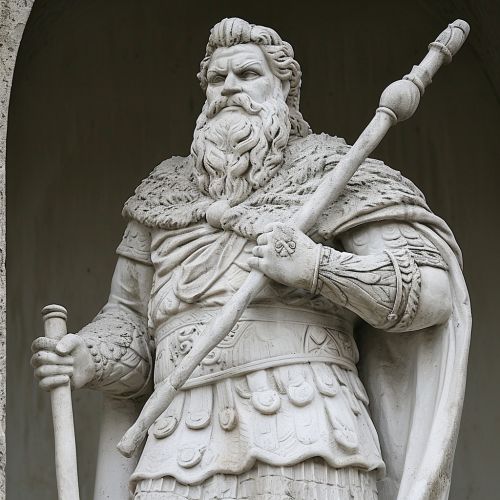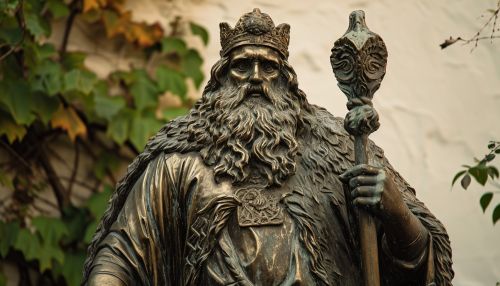Veles
Overview
Veles is a deity in Slavic mythology, who was associated with earth, waters, and the underworld. His role in the pantheon of gods is widely interpreted by scholars, with some suggesting that he was the god of the earth, while others propose that he was the god of the underworld, magic, and trickery. Veles is one of the few Slavic deities that are mentioned in numerous documents, and his worship was widespread among the Slavic people.


Name and Etymology
The name 'Veles' is thought to derive from the Proto-Slavic word *velь, meaning 'great' or 'powerful'. This etymology is supported by the fact that in many Slavic languages, the word 'veles' is used to denote a large, powerful man. However, other scholars propose that the name 'Veles' is related to the Proto-Slavic word *volь, meaning 'ox' or 'cattle', suggesting that Veles was originally a god of cattle.
Characteristics
Veles is often depicted as a large man with a beard, similar to the way other Slavic gods are portrayed. He is often shown holding a staff, a symbol of his authority and power. In some depictions, Veles is shown with horns, suggesting a connection with cattle and agriculture.
Role in Slavic Mythology
In Slavic mythology, Veles is considered a chthonic god, associated with the earth, waters, and the underworld. He is also associated with magic and trickery, and is often portrayed as a rival to the sky god Perun. The conflict between Veles and Perun is one of the key narratives in Slavic mythology.
Worship and Rituals
The worship of Veles was widespread among the Slavic people. He was venerated as a god of the earth and the underworld, and his cult was particularly strong among farmers and cattle breeders. Rituals dedicated to Veles often involved the sacrifice of cattle. In addition to his role as a god of the earth and the underworld, Veles was also venerated as a god of magic and trickery.
Modern Interpretations
In modern times, Veles has been interpreted in various ways. Some see him as a symbol of the earth and nature, while others view him as a representation of the underworld and death. His role as a trickster god has also been emphasized in modern interpretations of Slavic mythology.
